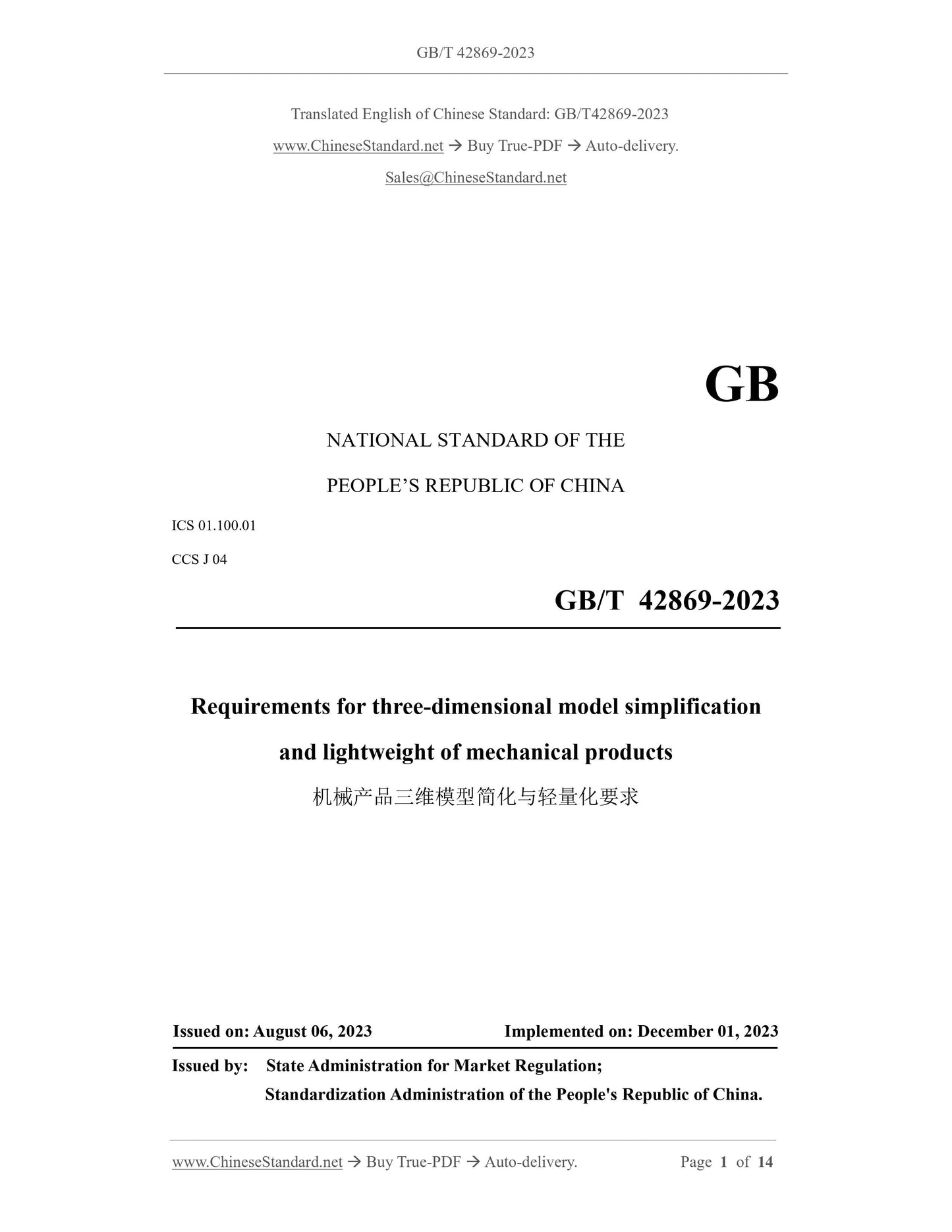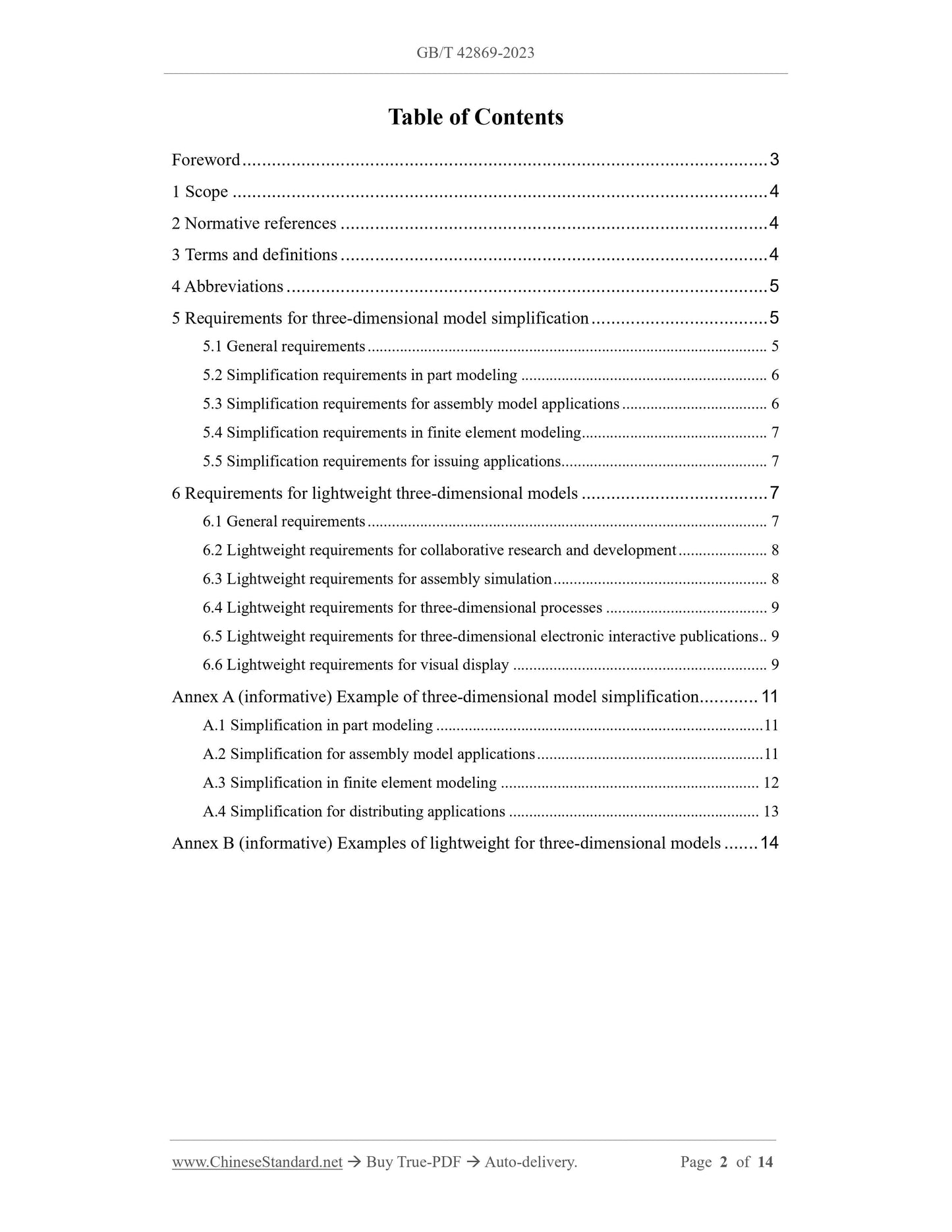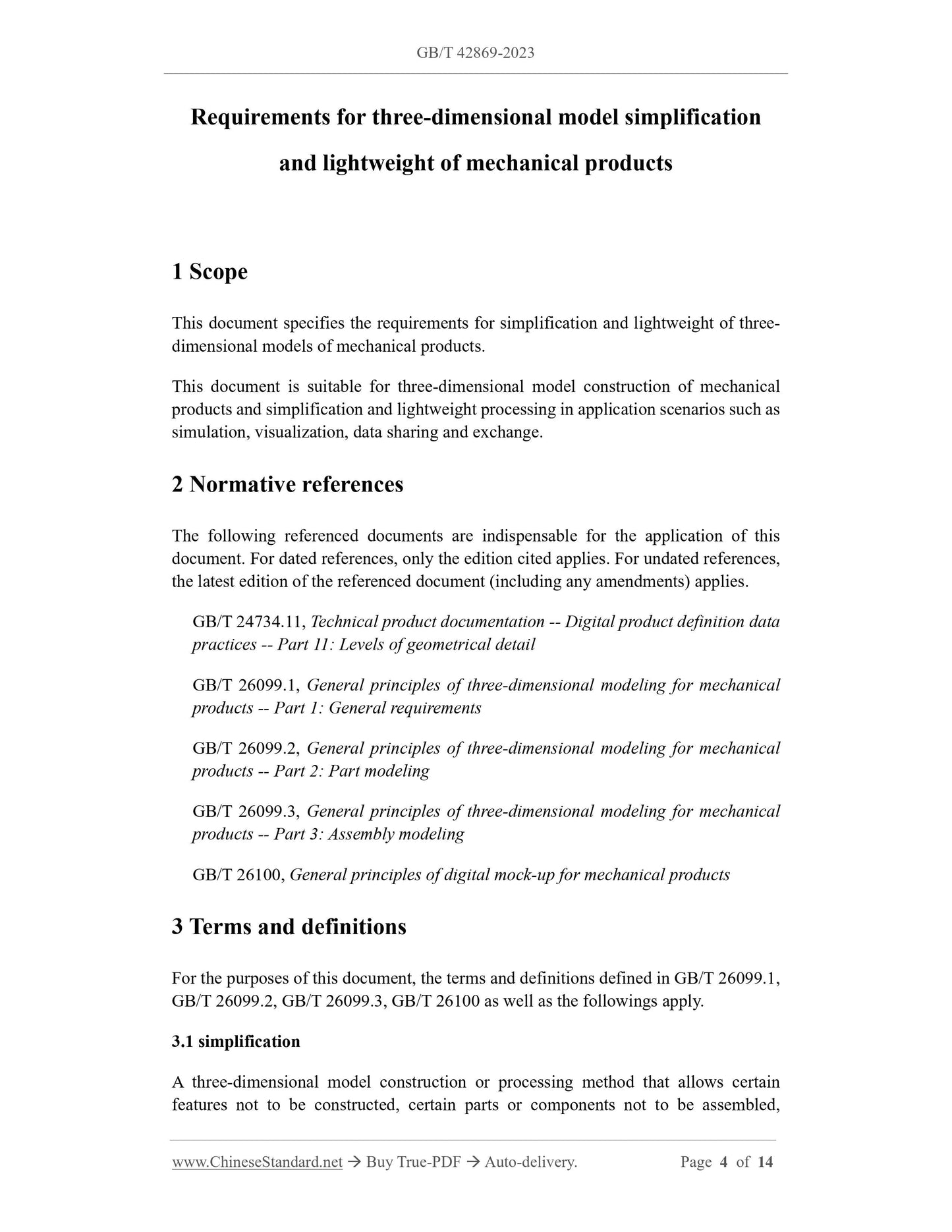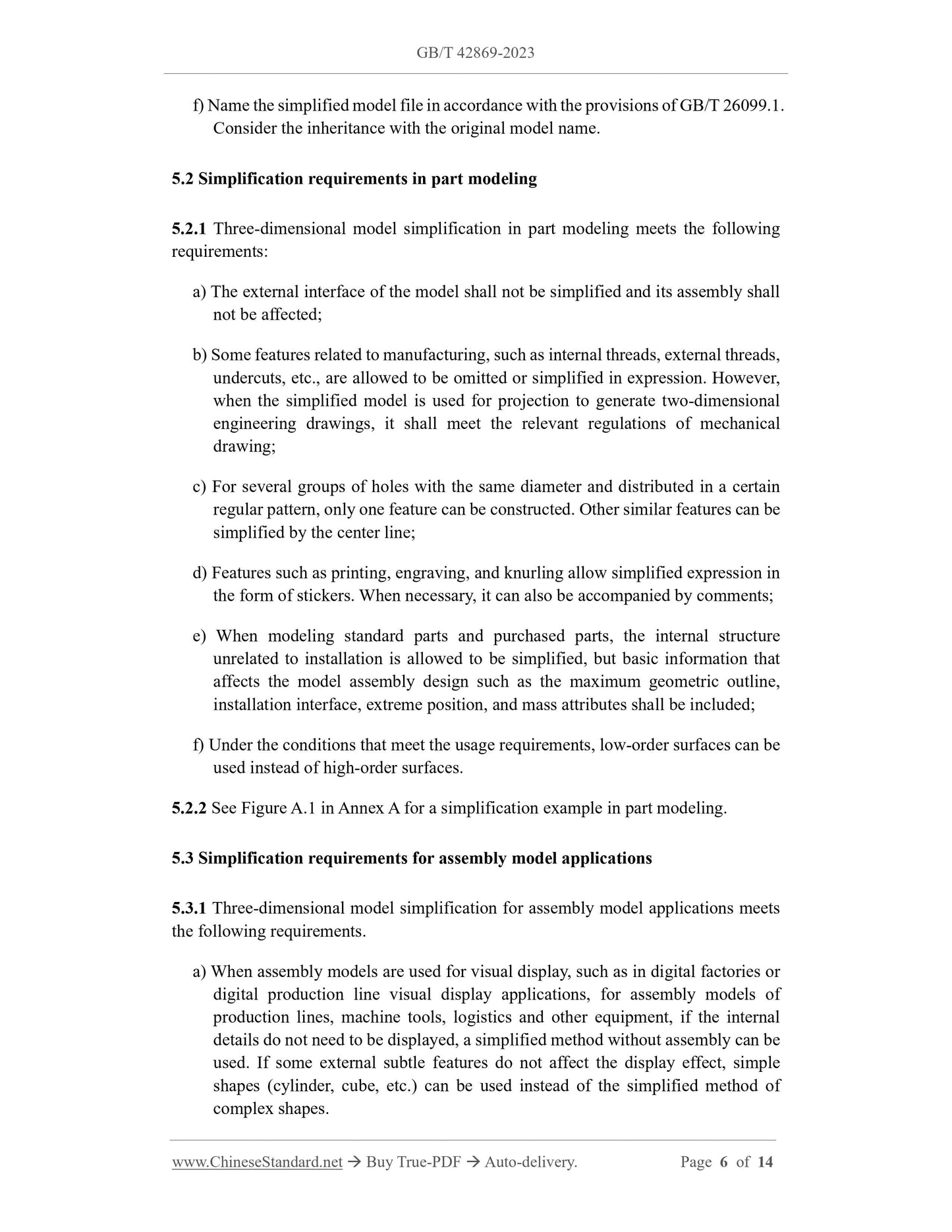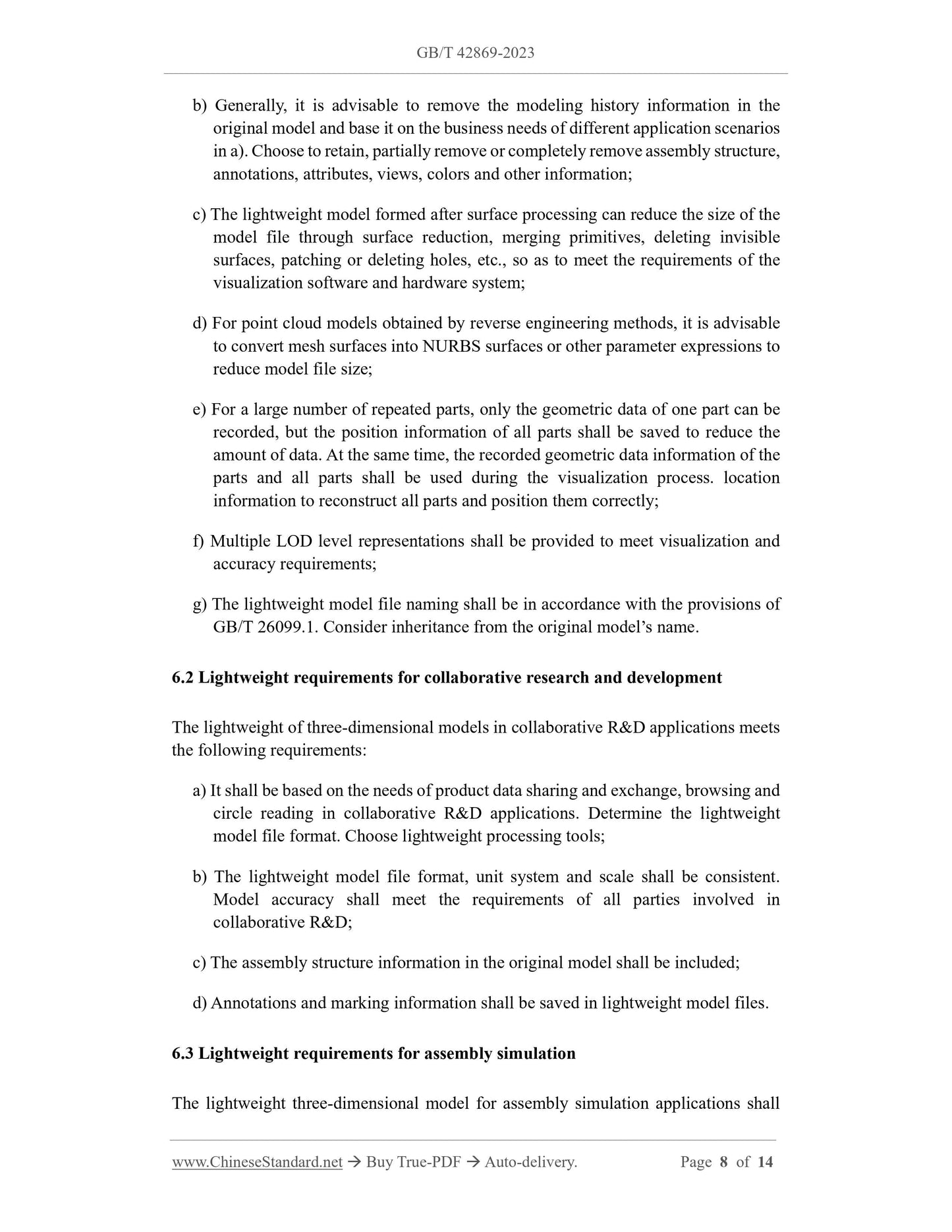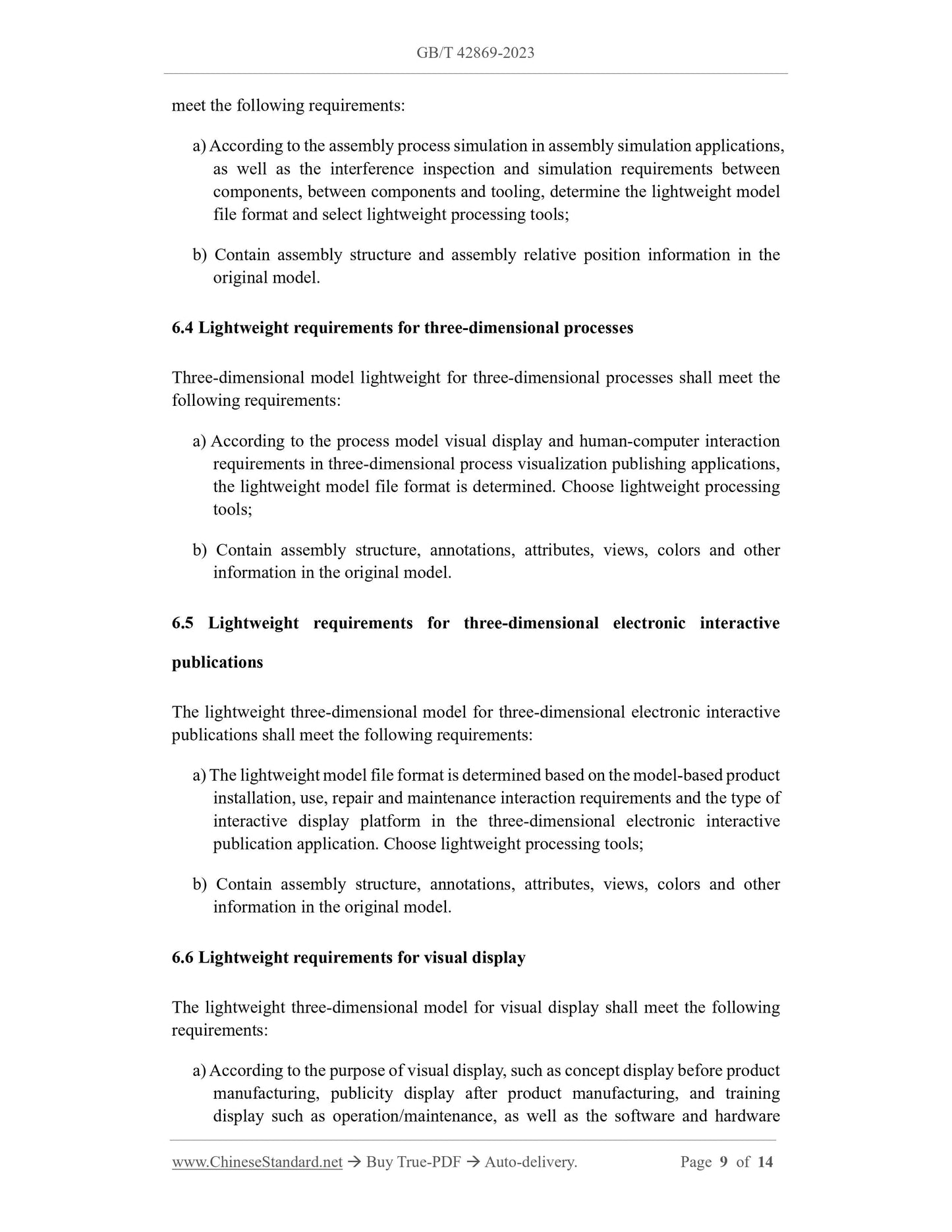1
/
of
6
www.ChineseStandard.us -- Field Test Asia Pte. Ltd.
GB/T 42869-2023 English PDF (GB/T42869-2023)
GB/T 42869-2023 English PDF (GB/T42869-2023)
Regular price
$175.00
Regular price
Sale price
$175.00
Unit price
/
per
Shipping calculated at checkout.
Couldn't load pickup availability
GB/T 42869-2023: Requirements for three-dimensional model simplification and lightweight of mechanical products
Delivery: 9 seconds. Download (and Email) true-PDF + Invoice.Get Quotation: Click GB/T 42869-2023 (Self-service in 1-minute)
Newer / historical versions: GB/T 42869-2023
Preview True-PDF
Scope
This document specifies the requirements for simplification and lightweight of three-dimensional models of mechanical products.
This document is suitable for three-dimensional model construction of mechanical
products and simplification and lightweight processing in application scenarios such as
simulation, visualization, data sharing and exchange.
Basic Data
| Standard ID | GB/T 42869-2023 (GB/T42869-2023) |
| Description (Translated English) | Requirements for three-dimensional model simplification and lightweight of mechanical products |
| Sector / Industry | National Standard (Recommended) |
| Classification of Chinese Standard | J04 |
| Classification of International Standard | 01.100.01 |
| Word Count Estimation | 10,135 |
| Date of Issue | 2023-08-06 |
| Date of Implementation | 2023-12-01 |
| Issuing agency(ies) | State Administration for Market Regulation, China National Standardization Administration |
Share
